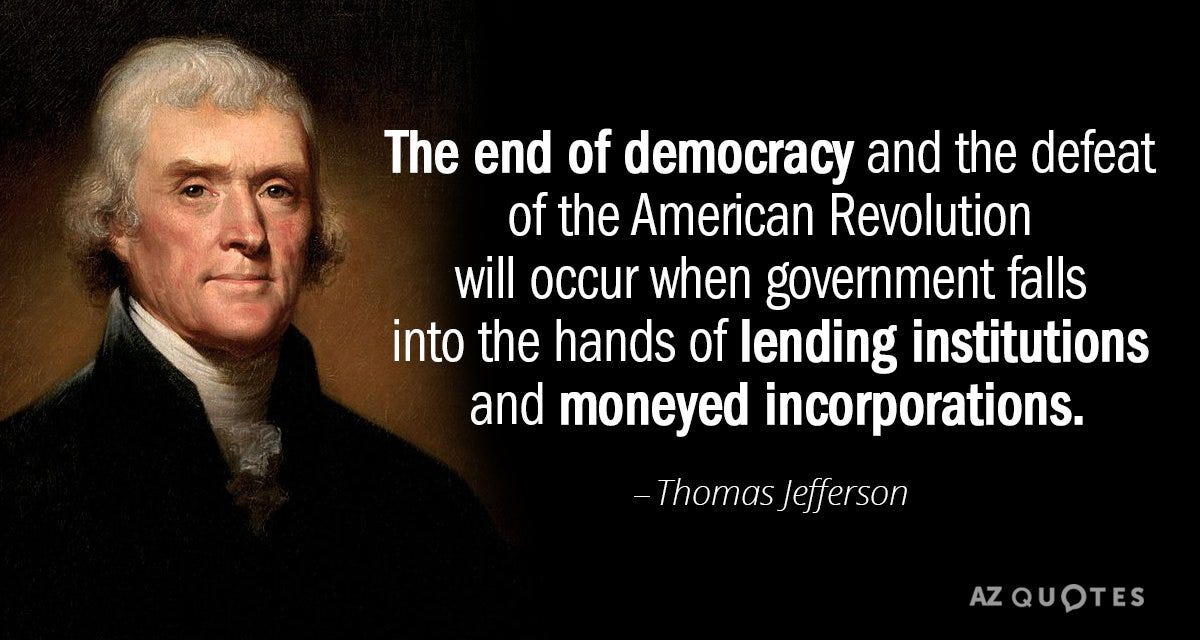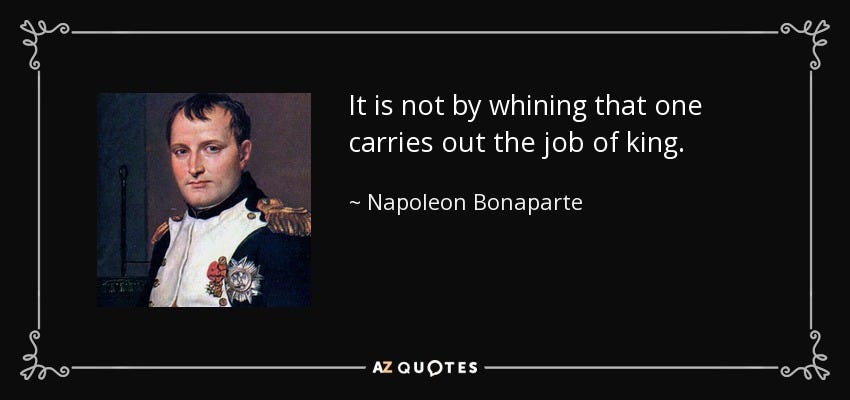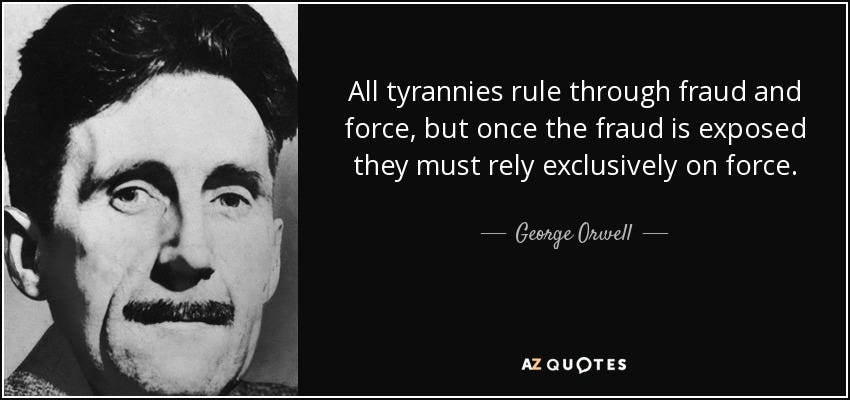The President Does Not Have the Authority to Decide Who Lives and Who Dies
Don't let anyone fool you. Power does not make law. Consent does.
I. Authority and the Constitution
Every republic begins with boundaries.
In ours, those boundaries are written in ink, not in a man’s will.
Think of it like a courtroom.
A judge enforces the law, while a jury decides the verdict. The judge can guide the legal process, instruct the jurors, and ensure fairness, but cannot alter the evidence or declare guilt arbitrarily. This separation of powers is essential for preventing justice from becoming tyranny.
A similar principle applies outside the realm of law. In a hospital, for example, a surgeon cannot change a patient’s chart or create new medical rules during surgery. The hospital’s board and ethics committee establish the standards, and the surgeon must operate within those guidelines. If every doctor could redefine policies mid-surgery, chaos would replace care.
This division of power is what allows systems to function effectively: it separates those who create the rules from those who implement them. Our government operates under the same principle. The Constitution distributes power to protect the rights of the governed from those in power.
Article I, Section 8: The Congress shall have the power to declare war, grant Letters of Marque and Reprisal, and establish rules concerning captures on land and water. Additionally, it shall raise and support armies and provide and maintain a navy.
Article II, Section 3: “The President is responsible for ensuring that the laws are carried out faithfully.
That is the fundamental principle: Congress writes the laws, and the President enforces them.
When acts of war or policy lead to death, they are rooted in congressional authority rather than in a presidential decree. The President may command the military, but he does not command the people’s conscience. He cannot declare war, change the law, or determine whose lives are expendable. The office of the President was designed to administer, not to dictate. Its purpose is to protect the living, not to judge who deserves to live.
Verification of this principle can be found in the Constitution: Article I, Section 8 grants Congress the power to declare war and create laws. Article II, Section 3 mandates that the President ensure those laws are executed faithfully.
As Alexander Hamilton stated in Federalist No. 69, the powers of the President “would be nominally the same as those of the King of Great Britain, but in substance much inferior.” Similarly, James Madison emphasized in Federalist No. 51 that the preservation of liberty relies on “the necessary partition of power among the several departments.”
II. The President’s Role
The President does not create laws, wars, or violence. Instead, their role is primarily administrative: they carry out what Congress authorizes, negotiate on behalf of the nation, and enforce existing statutes within the Constitution’s limits.
The framers of the Constitution designed the presidency with intention and restraint. Having experienced the consequences of concentrated power under kings, they understood the dangers of placing authority in one individual’s hands. They intended for the President to serve through the consent of the governed, not to rule by command.
The title “Commander in Chief” does not grant the President the power to start wars or create laws. This title comes into play only after Congress acts. While the President commands the armed forces, this command stays within the authority granted by Congress and the Constitution.
This reliance on executive orders and emergency declarations has occurred under President Trump. He recognizes that the power he wants exceeds his constitutional authority. However, the administration plans to normalize these illegal actions quickly. When Congress rejects his agenda, he turns to mechanisms intended for short-term crises rather than permanent governance. Emergency authority is designed for immediate national danger, not for political convenience.
Executive actions cannot rewrite laws, and emergency powers cannot bypass oversight. Neither can they substitute for the consent of the governed. The presidency was constructed to serve, not to rule. Power without restraint does not signify leadership; it represents an appetite mistaken for purpose.
The record makes the pattern clear. Since the National Emergencies Act was passed in 1976, presidents have declared more than 75 national emergencies. While some of these declarations were justified, many were not.
From the terrorism orders following 9/11 to the long-running sanctions on foreign governments, and from the border wall declaration in 2019 to the pandemic response in 2020, the use of temporary powers has become a lasting habit of the presidency. Currently, dozens of these emergencies remain active, many of them automatically renewed long after their original purpose has expired.
This situation does not reflect stability; rather, it indicates drift. The consent of its people does not govern a country in a state of emergency.
Congress has begun to push back. In 2023, lawmakers from both parties voted to reaffirm that tariff powers belong to Congress, not the executive branch. An attempt to justify new broad tariffs under an “economic emergency” failed, as the authors of the Constitution had already assigned that authority elsewhere.
Article I, Section 8 is explicit: only Congress may “lay and collect Taxes, Duties, Imposts and Excises.” The message is unmistakable: the power to tax, regulate trade, and make decisions about war or peace belongs to the people’s house, not the President’s desk.
Presidents have issued 79 national emergency declarations since 1976, with 41 remaining active as of 2024 (Congressional Research Service, National Emergency Powers, 2023). Trump’s 2019 border emergency was vetoed after two congressional attempts to terminate it (Public Law 116–35), and Biden formally revoked it in 2021. In June 2023, the Senate voted 68–27 to reaffirm congressional authority over tariffs and limit the future misuse of emergency trade powers under the International Emergency Economic Powers Act (IEEPA), reinforcing Congress’s control over economic policy (Congressional Record, S. Rept. 118–43).
III. Ignorance and the Role of the Jury
When Trump says he can “do whatever he wants,” he confuses power with authority. Power is force, while authority is permission granted, limited, and conditional. The President is not the law, no matter what Trump wants to claim; he is a temporary executor of it. His authority exists only as long as it aligns with the Constitution and the consent of the governed. This consent does not flow from the White House; it flows from the people.
This is why the right to a trial is sacred and why this administration aims to destroy it. The courtroom is the one place in America where the citizen and the state stand as equals. A jury is a reflection of the republic: twelve ordinary citizens chosen from the community, entrusted to judge facts and intent without fear of hierarchy. The President cannot overrule that judgment. He cannot declare guilt by proclamation or innocence by favoritism. The right to face one’s peers is the firewall between justice and rule by decree. Without it, there is no law, only obedience.
When any leader claims to be beyond judgment, they reveal not strength but ignorance: a refusal to understand the office they hold. In this country, no one governs the law; the law regulates the individual.
The right to trial by jury is guaranteed by Article III, Section 2 of the Constitution and reinforced by the Sixth and Seventh Amendments. The Founders placed this safeguard at the center of due process to ensure that no single authority could define guilt or innocence. As Alexander Hamilton wrote in Federalist No. 83, “The friends and adversaries of the plan of the convention, if they agree in nothing else, concur at least in the value they set upon the trial by jury.”
Trump’s repeated assertions of total presidential immunity (“I have an absolute right to do whatever I want”) directly contradict this constitutional framework and were explicitly rejected by the Supreme Court in United States v. Nixon (1974) and reaffirmed in Trump v. Vance (2020).
IV. The Attempt to Redefine Government
Every overreach begins as an interpretation. Authoritarians rarely claim to destroy democracy outright; instead, they assert that they are “restoring” it, returning it to what they believe it was meant to be. This administration and its allies are doing exactly that.
Through Project 2025 and H.R. 1, they aim to rewrite not only policy but also the public’s understanding of government itself.
Project 2025, outlined by the Heritage Foundation, proposes replacing the civil service with loyal political appointees, merging faith with policy, and “reorienting” federal power toward enforcing moral conformity. It envisions a government that acts quickly and decisively, without dissent, a structure designed for obedience rather than oversight.
H.R. 1, referred to as the One Big Beautiful Bill, provides the machinery for this ideology. Behind its slogans of “efficiency” and “fiscal responsibility” lies a network of cuts that punish the vulnerable and reward compliance. It redefines access to healthcare, food assistance, and public aid, narrowing who is considered deserving.
Together, these two frameworks create a new constitutional myth: that government should serve only the faithful, that dissent is disorder, that compassion is weakness, and that law should be subordinate to ideology.
This is not restoration; it is redefinition. The government they envision is not the one the founders established. The Constitution created a system of limits, whereas they are drafting one of permissions, an empire of interpretation where authority is justified by belief rather than by law.
Project 2025 calls for “deconstructing the administrative state” and re-establishing Schedule F (pp. Lxiv–Lxv). It advocates for the dissolution of the Department of Education and aims to focus federal health policy on prioritizing “the natural family as the centerpiece of American life” (pp. 4–6, 15–20). Additionally, it recommends revoking the recognition of “sexual orientation and gender identity” in federal law (pp. 4–5).
H.R. 1 – 119th Congress (2025):
Title I, §§10002–10006: expands work requirements for the Supplemental Nutrition Assistance Program (SNAP) and reinstates asset limits.
Title IV, §§44108–44125: This section mandates recurring Medicaid redeterminations and prohibits funding for gender-affirming care as well as for individuals who do not have verified citizenship.
These provisions shift the focus from universal service to conditional assistance, transforming administration into a domain of ideology.
V. The Civic Countermove
The presidency was never intended to define the people; rather, the people were meant to represent the presidency. When the government acts as a moral authority rather than a public servant, it forgets its true purpose.
The Constitution is not sacred scripture; it is a contract, a living agreement between the governed and those who govern. Its survival relies not on reverence but on recognition.
Project 2025 and H.R. 1 are more than just policy blueprints; they are tests for the public’s attention, the press’s memory, and Congress’s courage. They pose a critical question: Will we notice?
The civic response must begin where government overreach starts: in the details. Read the legislation, trace the appropriations, and follow the appointments. Every new “efficiency” or “realignment” may mask a potential shift in oversight. Every claim of “restoring order” often conceals an attempt to narrow who is considered part of the public.
The President does not have the authority to decide who lives and who dies. But if citizens look away long enough, that authority will be claimed by default.
The countermeasure is not rebellion; it is participation. Vote in every election, not just in those that capture attention. Contact your representatives when power drifts from its legal foundations. Refuse to repeat propaganda disguised as news. Defend the right to stand before a jury, seek redress, and question power without fear.
The Founders designed this system based on tension: Congress to restrain the executive, the courts to interpret laws, and the people to remind all branches who they serve. This balance can only survive through constant pressure.
We are that pressure. And pressure, applied consistently, becomes precedent.
The U.S. Constitution establishes the separation of powers under Articles I–III, ensuring mutual restraint among the branches. The Federalist Papers (Nos. 47, 48, 51) describe this mechanism as “ambition counteracting ambition.” Contemporary constitutional scholars and oversight reports, including those from the Congressional Research Service (2023) and the Brennan Center for Justice (2024), warn that excessive executive use of emergency declarations and administrative reclassification threatens this balance. Public vigilance and legislative reaffirmation remain the only reliable checks against executive overreach.








